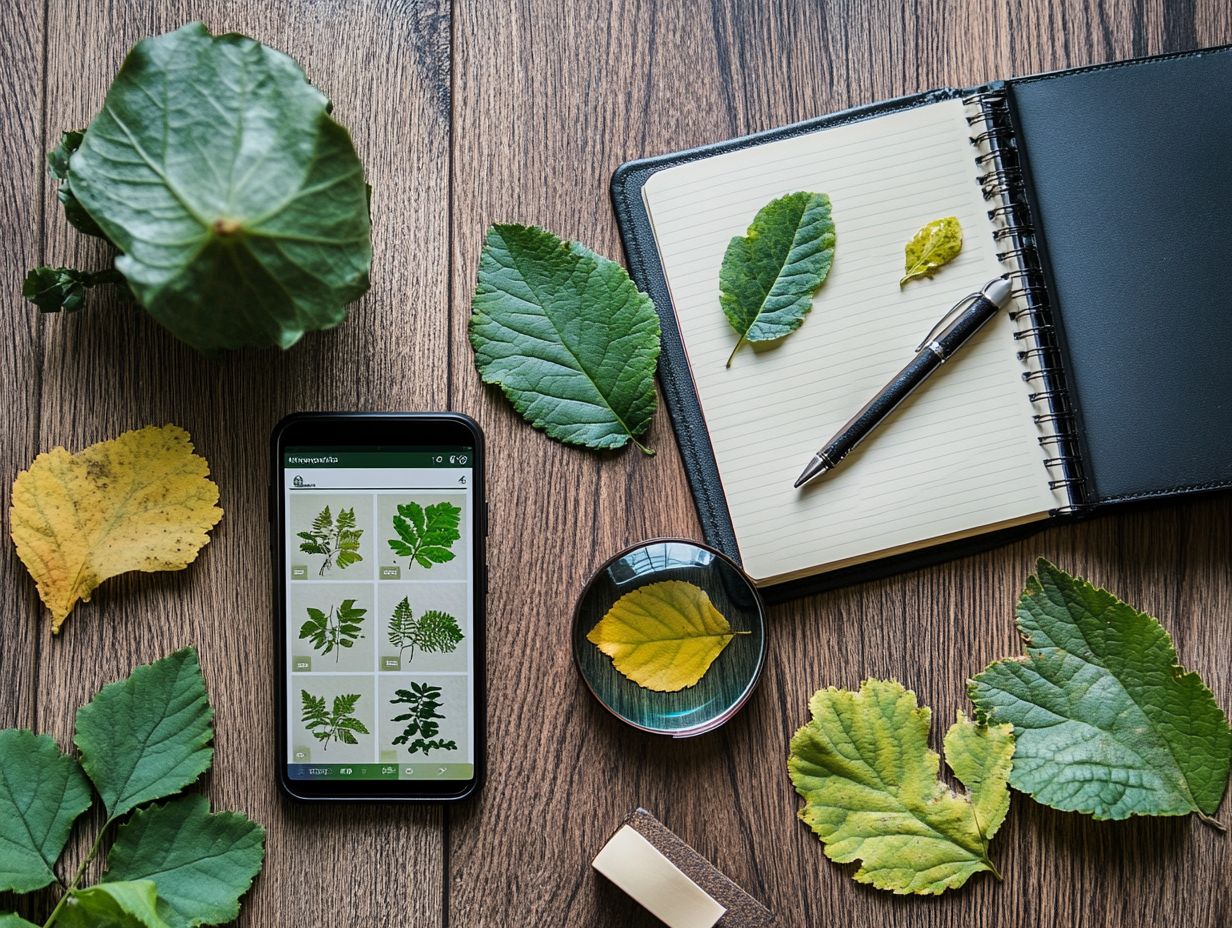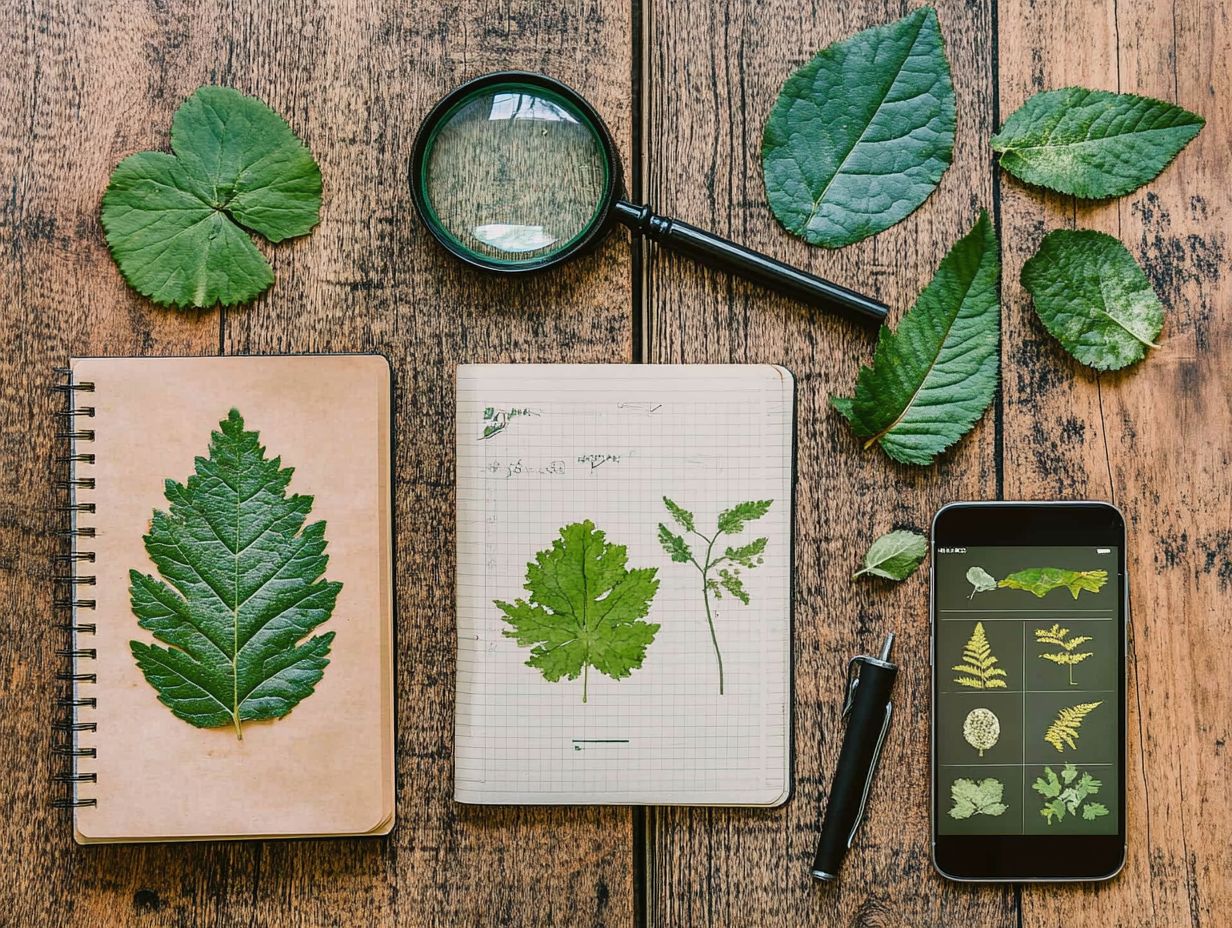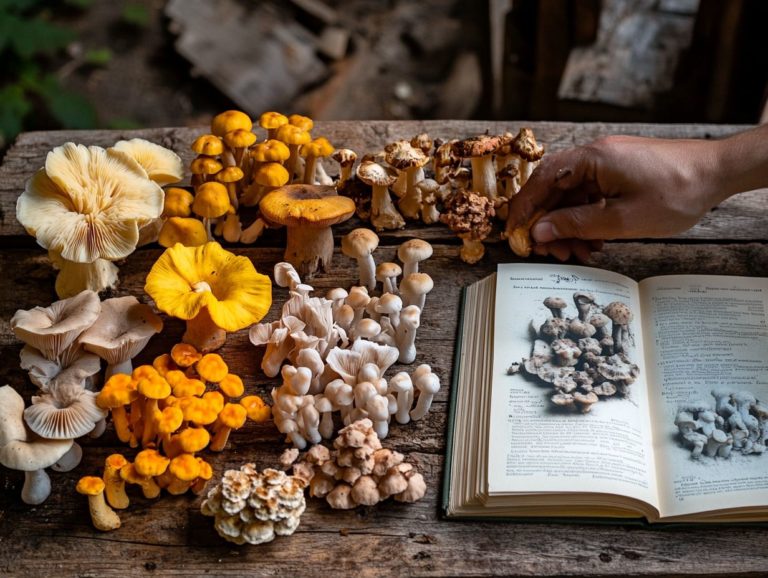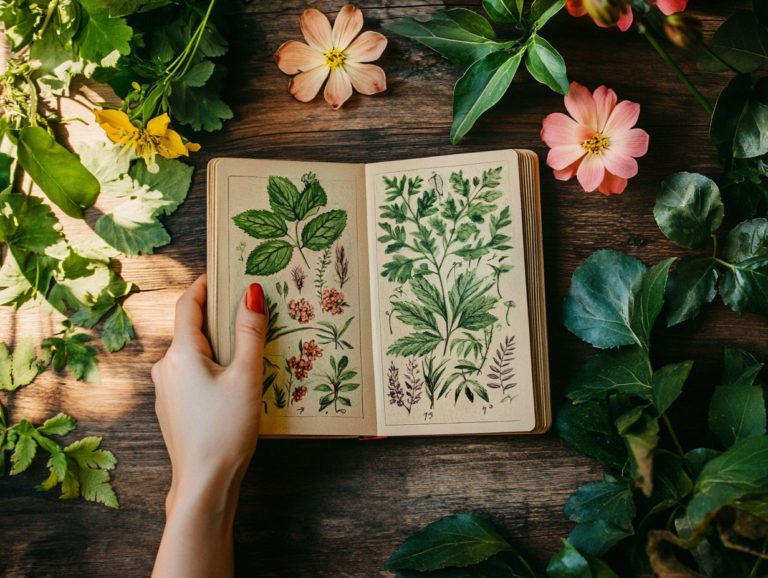Essential Tips for Plant Identification
Understanding plants transcends mere hobby; it becomes an essential skill for gardening enthusiasts and outdoor adventurers alike.
Recognizing various plant species can significantly enhance your gardening success and deepen your connection with nature. This article explores the importance of plant identification, sharing valuable tools and techniques while highlighting key characteristics to observe.
You’ll discover common pitfalls to avoid and practical tips to refine your identification skills. Embark on this journey to cultivate your plant knowledge, including understanding herbaceous and flowering plants, and elevate your outdoor experiences.
Contents
- Key Takeaways:
- The Importance of Plant Identification
- Tools and Techniques for Plant Identification
- Key Characteristics for Plant Identification
- Common Mistakes in Plant Identification
- Resources for Plant Identification
- Practice and Application of Plant Identification
- Frequently Asked Questions
- Common Mistakes to Avoid When Identifying Plants
- Can Plant Identification Be Done in Any Season?
- Tools That Can Aid in Plant Identification
Key Takeaways:

- Plant identification is vital for gardening and outdoor adventures.
- Use tools like field guides and online resources for accurate identification.
- Observe key features like leaf shape to enhance your skills.
The Importance of Plant Identification
Identifying plants is key for gardeners and outdoor lovers. It helps you appreciate local plant diversity and their roles in nature, along with understanding the benefits of learning plant identification.
A solid grasp of plant characteristics, such as leaf shape and structure, equips you to make informed decisions about plant care, including growing new plants from seeds or cuttings and understanding growth habits, ensuring a sustainable approach to gardening.
Your plant knowledge can also elevate your outdoor experiences, enhancing your appreciation for their beauty and ecological significance.
Why Knowing Plants is Crucial for Gardening and Outdoor Activities
Understanding plants is vital for successful gardening and elevating your outdoor adventures. Identifying edible plants and recognizing seasonal changes can transform your experiences in nature.
With this knowledge, you can cultivate a flourishing garden that yields a diverse array of fruits, vegetables, and herbs, nourishing both your body and palate. By closely observing growth patterns, you can pinpoint the perfect time to harvest, ensuring every bite is packed with flavor.
Keeping a nature journal enhances your connection to the environment, allowing for detailed observations and documentation of various plant species. You’ll be able to record your insights, improving future gardening endeavors while creating lasting memories.
Each outdoor excursion becomes richer as you identify and document plant life, turning simple outings into meaningful adventures.
Tools and Techniques for Plant Identification
Get ready with the right tools! Effective plant identification requires a good array of tools and techniques. Using identification keys and botanical manuals can significantly enhance your ability to recognize a variety of plant species. For those looking for more detailed insights, learning how to use local flora for identification can be beneficial, whether you’re a novice gardener just starting or an experienced horticulturist seeking to deepen your knowledge.
Common Tools and Methods for Identifying Plants

Several common tools and methods for identifying plants include field guides, plant manuals, and specific identification techniques that help you recognize various plant families and species.
These resources are vital for anyone who has a passion for botany, whether you’re a seasoned naturalist or a casual hiker. For instance, field guides showcase photographs and descriptions of plants, neatly organized by characteristics like leaf shape, flower color, and habitat, making them easy to use.
Comprehensive plant manuals delve deeper, offering in-depth information about lifecycles, ecology, and taxonomic details that are essential for more advanced identification.
Utilizing identification methods such as dichotomous keys allows you to systematically narrow down your options, ultimately leading to precise identification of specific species. Together, these tools form a robust framework that enhances your understanding and appreciation of the incredible diversity of plant life.
Key Characteristics for Plant Identification
Dive into the unique characteristics that define each plant and unlock the secrets of nature! To master plant identification, focus on understanding the unique characteristics that define each specimen. This involves close examination of various plant parts leaves, flowers, and stems while paying attention to their structure.
Delve into the nuances of leaf shape, arrangement, texture, and margins to truly appreciate the intricacies of each plant.
Physical Features and Traits to Look for
When you are identifying plants, it’s crucial to take note of their physical features and traits. Pay close attention to leaf characteristics, including shape, arrangement, and texture, along with other visual elements that define the plant’s anatomy. Familiarizing yourself with foraging techniques for plant identification can also enhance your skills in recognizing various species.
The color and size of flowers can offer key insights into a plant s identity; for instance, vibrant red blooms, like those of a rose, may suggest a different species than those with pale yellow petals. The presence and structure of fruits or seeds also help differentiate similar-looking plants. Observing the stem s characteristics its thickness, texture, and whether it is woody or herbaceous is also essential in the classification process.
Don t overlook the arrangement of leaves along the stem, whether they are alternate, opposite, or whorled, as this can significantly impact your identification efforts. By carefully examining these traits, you ll enhance your ability to identify plants with accuracy and confidence.
Common Mistakes in Plant Identification
Common mistakes in plant identification frequently arise from misidentification and confusion between similar species. This can profoundly affect your gardening success and overall outdoor experiences.
By honing your skills in distinguishing these plants, you can elevate your gardening journey to new heights.
Avoiding Misidentification and Confusion

To avoid misidentification and confusion, it’s essential to employ effective identification techniques that emphasize visual characteristics. For more insights, check out understanding the basics of plant identification and proper botanical classification of plants.
One effective approach is to closely examine leaf shape, size, and edge; differentiating between two species may depend on whether they have smooth or serrated edges. Pay attention to petal arrangement and flower color, as these can provide significant clues about a plant’s identity. Observing the growth habit—whether a plant sprawls or grows upright—further aids in classification. For a more thorough understanding, refer to how to use a plant key for identification. Textural differences in the stem or bark can also serve as distinctive features.
By combining these observations, you can accurately identify and truly appreciate the diversity found within similar plant families.
Resources for Plant Identification
A wealth of resources awaits you for plant identification, ranging from specialized websites and innovative apps to comprehensive plant manuals.
These tools offer invaluable information and guidance that cater to both novice and seasoned gardeners alike. Start exploring these tools today and transform your gardening experience!
Websites, Apps, and Other Useful Sources
Websites and apps for plant identification are invaluable. They provide access to extensive databases and tools that help you understand various plant species, including their scientific and common names.
These platforms have user-friendly interfaces. This makes it easy for anyone, whether you re a novice or an experienced botanist, to explore a rich diversity of flora.
For instance, apps like PlantSnap and PictureThis let you upload photos of plants for instant identification. They also offer care tips and habitat information.
Websites such as iNaturalist take it a step further with a community-driven approach. You can contribute observations, share insights, and seek help in identifying those elusive unknown species.
Collectively, these tools enhance your ability to connect with nature. They transform the art of plant identification into an engaging and informative experience.
Practice and Application of Plant Identification
Get out there and practice your plant identification skills; they’re essential for mastering the art! This hands-on approach will sharpen your expertise and, along the way, you can learn how to use color for plant identification, boosting your confidence in recognizing a wide array of plant species.
Tips for Improving Identification Skills

To enhance your plant identification skills, consistent practice and keen observation of how plants look are vital. Documenting your observations will track your progress and deepen your understanding of plant communities.
Engaging regularly with various plant species, including herbaceous and woody plants, cultivates familiarity. This hones your ability to discern subtle differences among similar plants.
Utilizing resources like field guides, apps, or local herbariums can significantly aid your learning. They offer valuable insights into plant characteristics.
Keeping a dedicated journal for your plant observations serves as both a reference and a reflection of your expanding knowledge. By sketching or photographing plants and noting details about their environment, you’ll foster a deeper connection that reinforces your memory.
By combining these strategies, you ll build greater confidence in accurately identifying plants across diverse settings.
Frequently Asked Questions
What are the essential tips for plant identification?
1. Familiarize yourself with plant characteristics: Observe the leaves, flowers, stems, and overall shape of the plant to identify its unique features. Understanding the science behind plant identification can enhance your foraging skills.
2. Use a field guide or database: Carry a plant identification book or use online databases to compare your plant with known species and find a match.
3. Take clear photos: If you cannot bring the plant with you, take high-quality photos of different parts of the plant to aid in identification.
4. Pay attention to the environment: Note where the plant is growing, such as in shade or full sun, and the type of soil it is in, as these can provide clues to its identity. For more insights, check out the top 5 resources for plant identification.
5. Consult an expert: If you are unsure about a plant’s identification, seek the help of a botanist or horticulturist for accurate identification and information.
6. Keep a record: Track the plants you have identified and their characteristics to refer back to in the future.
Why is it important to correctly identify plants?
Proper plant identification is crucial for various reasons:
– Safety: Some plants can be toxic or cause allergies, so knowing their identity can help you avoid potential harm.
– Gardening: Identifying plants in your garden helps you care for them and maintain a healthy, thriving garden.
– Conservation: Knowing the identities of plants in natural environments aids in conservation efforts and protects rare or endangered species.
Start identifying plants today and deepen your connection with nature!
Common Mistakes to Avoid When Identifying Plants
1. Relying solely on color: Color can vary in plants. Look at other characteristics as well.
2. Ignoring the environment: Don t identify a plant without considering where it grows. Its habitat is crucial.
3. Not using multiple sources: Always confirm the plant’s identity with different resources. Utilize field guides, databases, and online resources for plant ID, and consult experts.
4. Not paying attention to details: Small features, like the number of petals or leaf shape, significantly impact identification.
Can Plant Identification Be Done in Any Season?
Absolutely! You can identify plants all year round. Some plants only bloom in specific seasons, making them easier to spot then.
Tools That Can Aid in Plant Identification
1. Hand lens: This tool helps you see small details like flower parts clearly.
2. Smartphone apps: Use apps that can recognize plants from pictures for quick identification.
3. GPS device: Record the location of a plant for future reference while exploring the wild.
4. Reference books and online databases: These resources are excellent for comparing your plant with known species.
Start your plant identification journey today and connect with nature!






